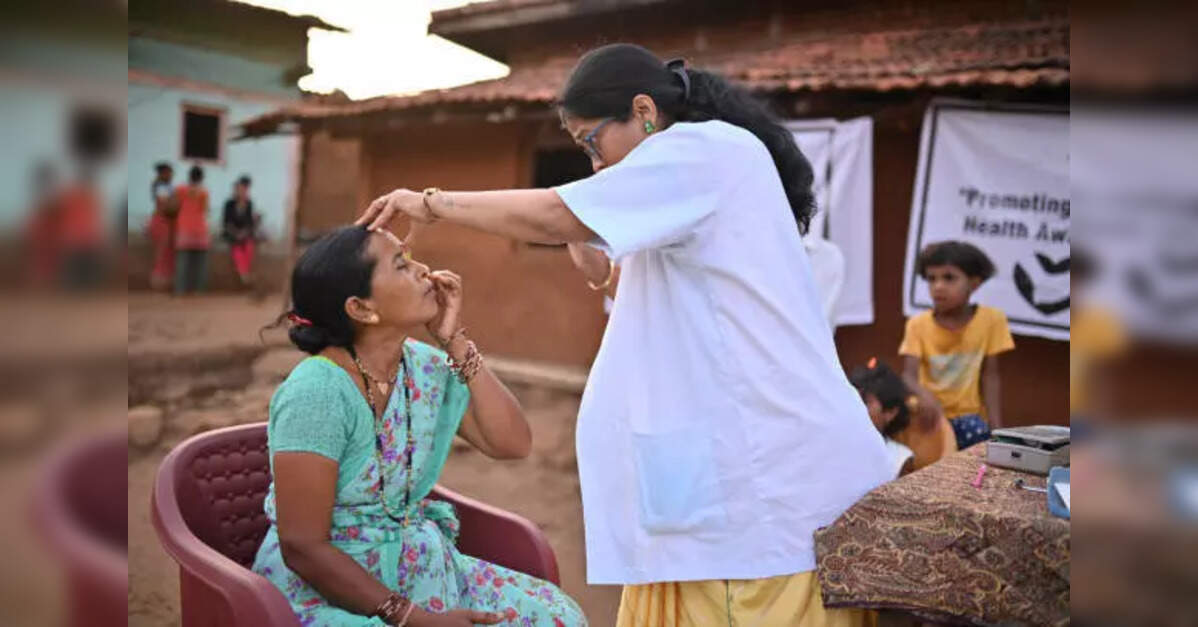Summary
India Healthcare System: Explore Indias ambitious vision to bridge the urban-rural health divide through digital health innovations, AI capabilities, and robus…
Source: health.economictimes.indiatimes.com

AI News Q&A (Free Content)
Q1: What are the main challenges faced by India's healthcare system in bridging the urban-rural health divide?
A1: India's healthcare system faces several challenges in addressing the urban-rural health divide, including inadequate infrastructure, shortage of healthcare professionals in rural areas, and limited access to advanced medical technologies. The government has introduced initiatives like Ayushman Bharat and the National Health Mission to improve healthcare delivery, but disparities remain significant, particularly in accessibility and quality of care.
Q2: How is digital health innovation influencing healthcare accessibility in rural India?
A2: Digital health innovations, such as telemedicine and mobile health applications, are playing a crucial role in enhancing healthcare accessibility in rural India. These technologies enable remote consultations and monitoring, reducing the need for physical travel to urban centers. According to recent studies, these innovations are helping to bridge the gap, but their widespread adoption is hindered by issues like digital literacy and internet connectivity.
Q3: What role does AI play in India's vision for a connected health ecosystem?
A3: AI is pivotal in India's vision for a connected health ecosystem by facilitating early diagnostics, personalized medicine, and efficient management of healthcare resources. AI-powered tools can analyze large datasets to identify trends and predict health outcomes, which is particularly beneficial for managing chronic diseases and optimizing healthcare delivery in both urban and rural settings.
Q4: What are the economic implications of improving healthcare in rural India?
A4: Improving healthcare in rural India has substantial economic implications, including reduced healthcare costs, enhanced productivity, and increased economic participation. By reducing the disease burden and improving health outcomes, rural economies can experience growth through a healthier workforce. Additionally, investment in healthcare infrastructure creates jobs and stimulates local economies.
Q5: What are the latest developments in modular and standards-based digital health ecosystems?
A5: Recent developments in modular and standards-based digital health ecosystems focus on improving interoperability, security, and data standardization. These ecosystems, like the Stanford Spezi, offer open-source solutions that allow developers to create customized digital health applications. Such platforms aim to democratize access to digital health tools and foster innovation across different healthcare settings.
Q6: How does the digital divide affect healthcare access in India's rural areas?
A6: The digital divide significantly impacts healthcare access in rural India by limiting the availability and utilization of digital health services. Factors contributing to this divide include socioeconomic disparities, lack of digital literacy, and insufficient infrastructure. Addressing these issues is essential to ensure equitable access to health technologies and services across different regions.
Q7: What strategies are being used to integrate AI and digital technologies into India's health system?
A7: Strategies to integrate AI and digital technologies into India's health system include partnerships between government and tech companies, development of AI-driven health solutions, and implementation of telemedicine platforms. Initiatives like the National Digital Health Mission aim to create a unified digital health infrastructure, facilitating seamless data exchange and enhancing service delivery.
References:
- Healthcare in India
- Public health system in India
- The Path to a Modular and Standards-based Digital Health Ecosystem
- Explaining Caste-based Digital Divide in India
- The Urban-Rural Divide in Neurocritical Care in Low-Income and Middle-Income Countries






